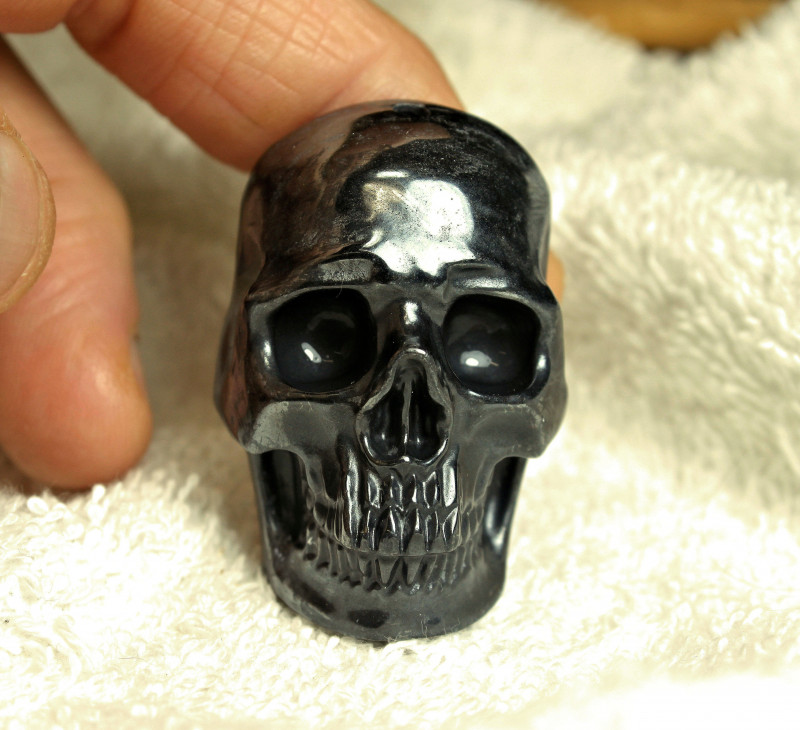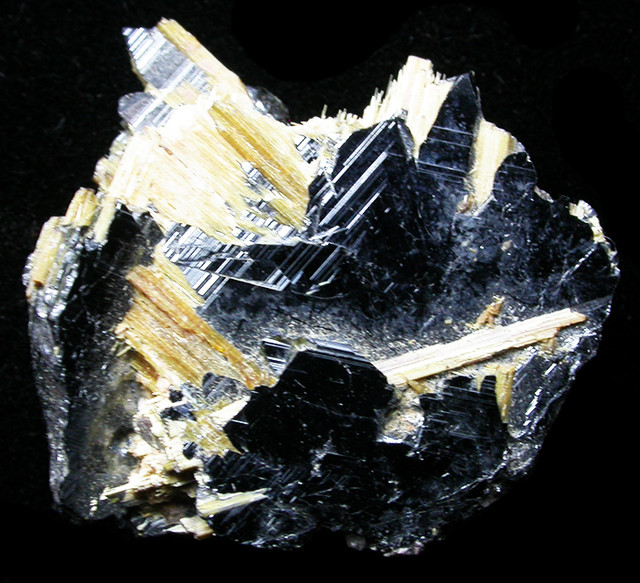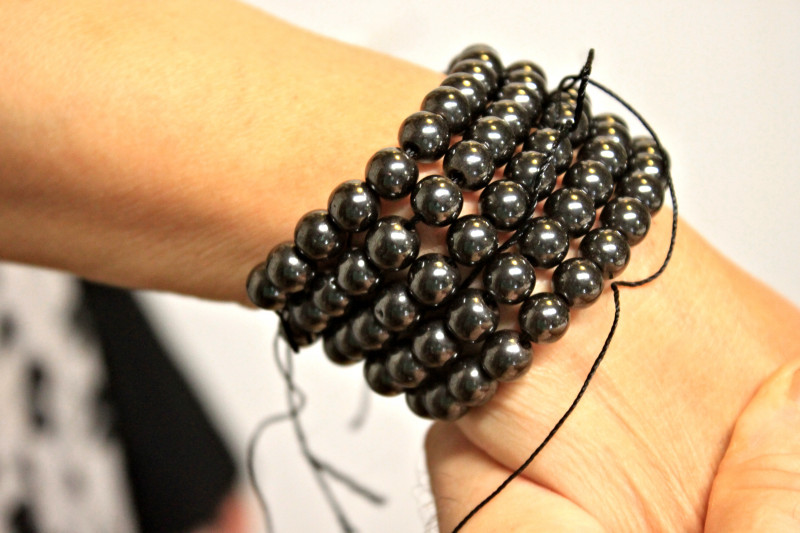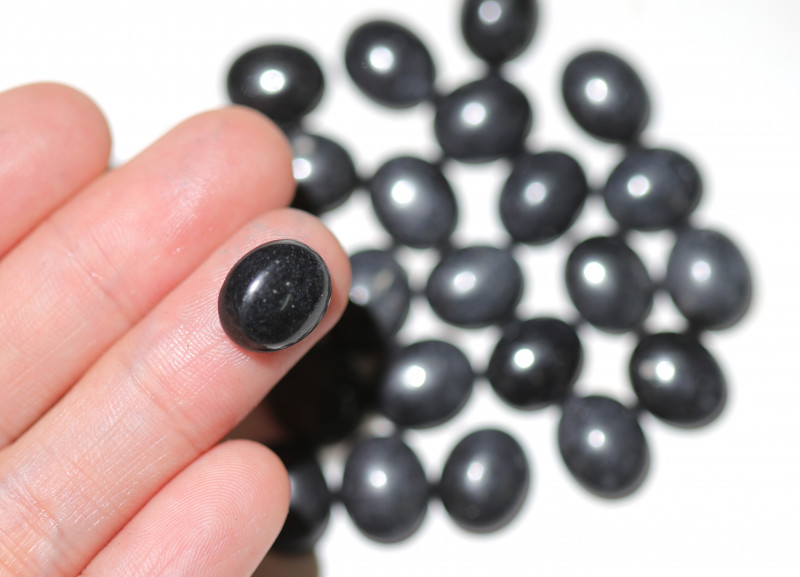
Piedra hematita: significado, propiedades y usos
 Al pensar en piedras preciosas, quizá la hematita no sea la primera que te venga a la mente. Pero bajo su oscura apariencia, la hematita encierra un sinfín de posibilidades.
Al pensar en piedras preciosas, quizá la hematita no sea la primera que te venga a la mente. Pero bajo su oscura apariencia, la hematita encierra un sinfín de posibilidades.
La hematita es una piedra de óxido de hierro con un exterior oscuro y metálico. Sin embargo, al cortarla o rasparla, verás sus brillantes tonos rojizos. Su versatilidad la convierte en un accesorio perfecto para todos. ¡Ya no tendrás que devanarte los sesos buscando ideas para regalos!
¿Para qué se usa la hematita? Si alguna vez has conducido un coche, usado un clip o abierto un refrigerador, ¡ya la has usado! De hecho, si has visto tierra roja en alguna parte, también es gracias a la hematita.
El valor de la hematita es innegable. Entonces, ¿por qué es valiosa?
Responderemos a esa pregunta en esta práctica guía, junto con todo lo que necesitas saber sobre esta radiante gema. ¡Abróchate el cinturón y sigue leyendo para descubrir nuestra guía completa sobre la legendaria hematita!

¿Qué es una piedra de hematita?
La hematita, o hematita, es un mineral de óxido de hierro oscuro conocido por su característica veta de color rojo a marrón rojizo y su brillo metálico.
Como mineral, la hematita es una de nuestras fuentes de hierro más importantes. Como piedra preciosa, es igualmente ubicua: se utiliza en todo tipo de objetos, desde joyería masculina y femenina hasta dados y figuras talladas.
En términos astrológicos, la hematita es una de las piedras del zodiaco de Capricornio. Su energía terrenal y arraigada puede sintonizar con la concentración de Capricornio. Al mismo tiempo, la hematita puede fomentar un mejor equilibrio entre la vida laboral y personal, lo cual puede ser un gran desafío para los signos de tierra.
El planeta Marte también está asociado con la hematita. Para empezar, la hematita se conecta con los rasgos astrológicos de Marte: tenacidad y fuerza. ¡Incluso la hematita abunda en Marte!
En cuanto a sus usos más comunes, la hematita es, ante todo, una fuente clave de hierro. Sin embargo, también se utiliza para fabricar pigmentos, bloquear la radiación e incluso estabilizar barcos.
Entonces, ¿qué le otorga a la hematita esta gama de propiedades? Todo se reduce a las fascinantes características químicas de la piedra.
Especificaciones y características de la hematita
Si tomas una piedra de hematita, probablemente lo primero que notarás es su peso. Entonces, ¿por qué es tan pesada? ¡Pues es densa! De hecho, la hematita tiene una densidad un 50 % mayor que la de la mayoría de las piedras preciosas.
¿Qué ocupa todo ese espacio? Principalmente hierro y oxígeno. En su forma más pura, la hematita está compuesta por un 70 % de hierro y un 30 % de oxígeno.
En la escala de Mohs de dureza mineral , la hematita se clasifica entre 5 y 6,5. Esto significa que tiene una durabilidad similar a la del esmalte dental, el vidrio o el titanio.
Aquí está la lista completa de las especificaciones de la hematita:
Compuesto químico : óxido de hierro
Escala de Mohs : 5-6,5
Color : gris plateado, negro, marrón rojizo, rojo.
Estructura cristalina : trigonal (subsistema del hexagonal)
Brillo : varía de submetálico a metálico a opaco.
Transparencia : opaca
Índice de refracción : 2,94-3,22
Densidad : 5,3
Escote : ninguno
Raya : de color rojo a marrón rojizo
Dada la singularidad de la hematita, quizá te preguntes: ¿es una piedra preciosa? No exactamente, ya que las únicas piedras preciosas tradicionales son el diamante, el rubí, el zafiro y la esmeralda. Sin embargo, la hematita es una piedra semipreciosa .

Más allá de su composición química, ¿qué otras propiedades de la hematita es importante conocer?
Propiedades de la piedra preciosa hematita
Hemos hablado de por qué la hematita es crucial para muchas industrias, pero ¿qué hay de la joyería con hematita? ¡También te lo contamos!
A continuación, cubriremos los factores cruciales a examinar al comprar piedras de hematita.
Cortar
Al buscar hematita, no encontrará tantas piezas facetadas como con otros cristales. En cambio, la hematita se suele cortar en cabujones, tallas o cuentas. El mineral en sí es más resistente, pero más frágil que el hierro, lo que facilita su modelado en piezas impresionantes.
Sin embargo, esto no significa que no encuentres joyas de hematita. Para las piezas facetadas menos comunes, los joyeros suelen tallar formas redondas, de pera u ovaladas. Estas pueden usarse para colgantes o aretes.
Las cuentas de hematita son aún más comunes. Se utilizan para crear hermosas pulseras y collares. Los anillos de hematita son populares entre quienes desean aprovechar sus beneficios de protección y conexión a tierra en cualquier lugar.
Del mismo modo, quienes practican el Feng Shui utilizan hematita tallada para potenciar su energía chi. Estas tallas suelen adoptar la forma de figuras de hematita, como el Buda sonriente o animales celestiales.

Ahora que hemos establecido los cortes de hematita, pasemos al color.
Color
La hematita crece de forma natural en diversas variedades, como el mineral riñón, la martita, la rosa de hierro y la especularita. Si bien cada una presenta su propia coloración distintiva, el hilo conductor que las une es una veta carmesí oscura.
Aunque el tono carmesí de la hematita es una característica clave, este color solo se aprecia cuando se pulveriza o se corta en láminas finas. A diferencia de otros cristales rojos como el granate o la cornalina, la hematita tiene un rojo apagado que proviene de la oxidación del hierro.
Hablando de silenciamiento, pasemos a la claridad.
Claridad
Una de las mejores cosas de usar piedras preciosas es cómo brillan con la luz. Algunas piedras reflejan la luz más que otras, y esto influye en su grado de claridad.
Los grados de claridad de las piedras preciosas se basan en la transparencia y las inclusiones de la piedra. Menos inclusiones significan mayor claridad y, por lo tanto, un valor generalmente más alto.
Cuando una piedra es naturalmente opaca, la clasificación de claridad es simple: Opaca (O). La hematita entra en esta categoría porque no la atraviesa la luz. Sin embargo, la refleja con un deslumbrante brillo metálico.
Dado que la hematita no tiene grados de claridad variables, su valor se determina en gran medida por el tamaño del ejemplar. Y esto nos lleva directamente al último factor de las piedras preciosas.
Peso en quilates
Cuando se desentierran las hematitas, se forman enormes cristales. Gracias a su densidad y opacidad, la hematita se puede cortar hasta alcanzar prácticamente cualquier peso en quilates.
La abundancia de hematita significa que las piedras con mayor peso en quilates son mucho más asequibles que otras gemas.
Todas estas propiedades influyen en el valor de mercado de una piedra preciosa. Sin embargo, cada persona puede apreciar diferentes beneficios en una misma piedra. Analicemos cómo diferentes grupos han valorado la hematita a lo largo del tiempo.

Historia de la hematita
La hematita ha desempeñado un papel fundamental a lo largo de la historia. Desde las cuevas prehistóricas hasta los campos de batalla, esta brillante gema ha estado presente en casi todas las sociedades de la humanidad.
La historia de la hematita se remonta a la Edad de Piedra, sin ánimo de ofender. Su color rojo y su fragilidad la convirtieron en una de las primeras herramientas de escritura conocidas por el hombre. Los paleontólogos encontraron hematita en forma de tiza roja, también llamada sanguina, en Pinnacle Point, una zona de Sudáfrica donde presumiblemente comenzó la vida humana.
Más tarde, en la Antigua Roma, la hematita se usaba como accesorio popular de joyería, decoración del hogar y en el campo de batalla. Los romanos la consideraban una forma de protección contra el peligro y el equivalente antiguo de las malas vibras. Y no eran los únicos.
Muchos pueblos a lo largo de la historia han utilizado las propiedades defensivas de la hematita. Los nativos americanos la usaban como pintura de guerra para protegerse e intimidar a sus enemigos. Los egipcios enterraban polvo de hematita en las tumbas de sus faraones, probablemente para proteger sus preciados restos de los saqueadores.
Si bien las civilizaciones antiguas ciertamente usaban accesorios y decoraciones con hematita, esta no se popularizó como joyería hasta la época victoriana. Hoy en día, la hematita se utiliza para crear un grano fino llamado rouge, un compuesto para cortar y pulir metales.
Si eres artista, quizás hayas visto pinturas de color amarillo ocre. Lo que quizá no sepas es que el ocre es un pigmento arcilloso que suele colorearse con hematita. Con hematita deshidratada se obtiene ocre rojo, pero con hematita hidratada, ocre amarillo.
Como pueden ver, la hematita ha estado en la Tierra más tiempo que cualquier persona viva hoy en día. Entonces, ¿cómo se formó?
Orígenes y fuentes de la piedra hematita
La hematita existe en todo tipo de depósitos de rocas y minerales: rocas ígneas, rocas metamórficas, lechos de sedimentos y lavas.
Sin embargo, la hematita se observa con mayor frecuencia en depósitos sedimentarios, en capas entre la magnetita y el mineral de cuarzo chert. Estos depósitos estratificados se denominan formaciones de hierro bandeado o BIF.
Entonces, ¿qué tipos de hematita existen en la naturaleza?
Variedades populares de hematita
La hematita natural es una piedra con múltiples facetas. En función de factores ambientales como el agua o el suelo, las piedras de hematita adquieren una variedad de formas fascinantes.
Una forma que se ve a menudo es la losa. Esta variedad se llama especularita y consiste en escamas de hematita con forma de espejo que forman una pila de placas. Las placas exhiben el brillo metálico de la hematita al girar la losa.
Otra variedad fascinante es el mineral riñón. Esta piedra de hematita recibe su nombre por su superficie esférica, que se asemeja a un riñón. Su superficie suele presentar manchas rojas, pero aún exhibe el brillo metálico característico de la hematita.
Si el mineral de riñón no te gusta, quizás te guste la variedad de rosa de hierro. Esta variedad recibe su nombre del patrón floral que adquiere durante su formación. Las capas de pétalos superpuestos son tan cautivadoras que podrías olvidar que la rosa de hierro creció así por sí sola.

¿Dónde se encuentra la hematita?
Yacimientos de extracción de hematita
Muchos yacimientos mineros se encuentran fuera de Europa, especialmente en Inglaterra e Italia. Otros lugares abundantes en todo el mundo incluyen:
Brasil
Sudáfrica
Canadá
Porcelana
Rusia
India
Australia
EE.UU
Probablemente hayas oído hablar de los Grandes Lagos. Pero ¿sabías que de ahí proviene la mayor parte de la hematita extraída en EE. UU.? De hecho, el Lago Superior es la principal fuente de hematita en EE. UU.
Si bien alrededor de 50 países poseen yacimientos de hematita, Australia y Brasil son los principales productores. En 2020, ambos países produjeron 1300 millones de toneladas métricas.
La mayor parte de la hematita extraída se destina a la fabricación de acero, pero también tiene numerosos usos metafísicos. En cuanto a los significados de la hematita, ¿qué simbolismos espirituales podríamos descubrir?
Significado de la piedra hematita
Debido a sus característicos patrones rojos, el nombre hematita proviene de la palabra griega hema o haima , que significa sangre. El nombre en español de la piedra deriva de una frase más larga del griego antiguo, haimatitēs lithos , que significa "piedra roja como la sangre".
Cabe señalar que la piedra de sangre, un mineral de sílice negro con manchas rojas, es una piedra preciosa diferente.
Sin embargo, la asociación de la hematita con la sangre va más allá de su color. A veces se utilizaba para prevenir la pérdida excesiva de sangre, especialmente en mujeres que daban a luz.
Además de la sangre, la asociación más común con la hematita es la magia. Su significado espiritual se vincula con su capacidad para equilibrar los reinos espiritual y físico. A nivel individual, podría representar la protección del cuerpo físico contra fuerzas sobrenaturales.
La hematita se denomina “la piedra del dominio mental” por su capacidad percibida de aportar claridad y sabiduría a quien la usa.
Ahora ya conoces el significado espiritual de la hematita. Sin embargo, en términos de sanación, ¿para qué sirve? Y si bien puede nutrir el espíritu, ¿es buena para el cuerpo?

Propiedades espirituales y curativas de la hematita
Probablemente no sorprenda que los beneficios de la hematita para la curación física estén relacionados con la sangre. La hematita puede ayudar a regular la circulación sanguínea, aliviando el dolor menstrual y los calambres en las piernas. Su alto contenido en hierro facilita su absorción, especialmente en personas con anemia o que siguen una dieta vegetariana o vegana.
Las piedras de hematita pueden actuar como un poderoso protector para la sanación emocional, protegiéndote del daño y conectándote con el presente. ¿Alguna vez has tenido tantos pensamientos dando vueltas que no podías pensar con claridad? ¡La hematita puede ayudarte! Además de sus propiedades centradoras, la hematita puede ser una poderosa herramienta para la claridad y la concentración.
¿Qué hay de la sanación espiritual? El chakra de la hematita se corresponde con el chakra raíz, o chakra base, en la base de la columna vertebral. Esta zona alberga nuestros instintos básicos y nuestra conexión con la Tierra.
Como seres humanos, tenemos una necesidad primordial de sentirnos seguros y protegidos. Cuando el chakra raíz está bloqueado, podemos sentirnos frustrados y ansiosos. La hematita lo abre, brindándonos la base para crecer y permitiéndonos ver nuestro verdadero propósito en el mundo.
Si esto te parece una buena oferta, quizás te preguntes: ¿Se puede usar hematita a diario? La respuesta dependerá de tu propia energía.
La fuerza de la hematita puede ser abrumadora y hacer que algunas personas se sientan agobiadas sin descanso. A otras les va bien usándola todo el día. Nuestro mejor consejo es confiar en tu instinto y evitar usarla para dormir.
Para asegurarse de tener siempre una piedra de conexión a tierra a mano, es importante saber cómo limpiar y purificar su hematita.

Cuidado y mantenimiento de la hematita
Los cristales curativos funcionan absorbiendo energía positiva o negativa. Toda esa energía puede bloquearse, por lo que ciertos cristales deben limpiarse para evitarlo.
¿Es necesario limpiar la hematita? ¡Te recomendamos hacerlo! Estos son nuestros métodos favoritos:
Frote la superficie con un cepillo suave y seco para liberar la energía negativa acumulada.
Sumerja su piedra de hematita en un recipiente con sal marina durante la noche para limpiarla y purificarla.
Cargue la piedra colocándola encima de un cristal a base de cuarzo (por ejemplo, amatista, citrino, aventurina).
Aunque las piedras de hematita son más resistentes que algunas gemas, siguen siendo frágiles. Para evitar daños, evite:
Limpiadores ultrasónicos
Limpieza con vapor
Productos químicos domésticos como amoníaco y ácidos.
Debido a que la hematita se oxida fácilmente, recomendamos mantenerla lo más alejada posible del agua.
¿Con qué frecuencia debe realizar estos pasos? Le sugerimos limpiar la hematita una vez al mes. En cuanto a la limpieza, siga nuestros consejos al menos una vez al mes o con mayor frecuencia, según el uso que le dé a la piedra.
Si está listo para comenzar a buscar hematita, siga leyendo para conocer nuestro desglose de precios.

Precios y valor de la hematita
¿Cuánto cuesta la hematita? En general, la hematita es una piedra asequible debido a su abundancia.
A precios de mayorista, los especímenes de hematita oscilan entre $0,05 y $0,25 por quilate. Estos grupos de hematita suelen ser enormes, con pesos que van desde los 75 hasta casi los 600 quilates. Aun así, se puede encontrar un espécimen grande de hematita por menos de $30.
Los precios de la hematita especular son ligeramente más altos, con un precio promedio de alrededor de $3 por quilate.
Las tallas de hematita hechas a mano también son más valiosas. La mayoría de las tallas de hematita son piezas pequeñas, de menos de 5 cm. Su precio puede rondar los 8 dólares por quilate o más, dependiendo del nivel de detalle de la talla. Las tallas de más de 12,7 cm tienen precios mucho más altos.
Muchas de las piezas que se comercializan como hematita son en realidad hematina. La hematina es un material sintético de aspecto casi idéntico a la hematita.
¿Cómo se puede diferenciar la hematita de la hematina? La hematina es magnética, mientras que la hematita no. La forma más fácil de comprobar el magnetismo es usando algo metálico, como una llave o una horquilla.
¿Buscando paz y protección?
¡Con esto termina nuestra guía completa sobre la hematita! Ahora puedes ver por qué esta gema es mucho más de lo que parece.
Como piedra curativa, la hematita ofrece la comodidad y seguridad que todos necesitamos. Además de sus propiedades espirituales, es un elemento decorativo perfecto para cualquier habitación o conjunto.
Desde su presencia en los inicios de la humanidad hasta su incomparable variedad de usos, la hematita es sin duda una parte invaluable de nuestro mundo.
Si ha estado buscando una piedra de conexión a tierra que combine con todo, ¡ explore nuestras piedras de hematita hoy !
Buscar en el Gemstone Encyclopedia
Subastas relacionadas
Artículos relacionados
Cada persona tiene una piedra preciosa que corresponde a su signo zodiacal. Estas también se conocen como tu Piedra Estelar. Aprende más sobre estas piedras y descubre cuál es tu Piedra Estelar.
10th May 2018
Originalmente, las piedras de nacimiento o gemas se asociaban con un signo zodiacal o el mes de nacimiento de una persona. Descubra cuál es su piedra y vea las que tenemos a la venta.
8th Feb 2021
Hay docenas de gemas de cuarzo y calcedonia con diversos colores y patrones. ¡Aprenda todo sobre las propiedades del cuarzo y cada tipo de cuarzo, desde la amatista y el ágata hasta el cuarzo plasma y el cuarzo fantasma!
15th Oct 2020
últimos artículos
Las tallas de marfil de palma, también llamadas marfil vegetal, son una alternativa natural al marfil de elefante, extraído éticamente de la nuez de palma de la palmera sudamericana Phytelephas. ¡Aprenda todo sobre el marfil de palma en esta guía!
15th Jan 2026
Las piedras de flores de crisantemo son maravillas naturales que presentan un patrón floral de calcita blanca, celestita o andalucita sobre piedra caliza negra o lutita.
13th Jan 2026
La piedra solar reticulada arcoíris es una variedad de feldespato con tres magníficos efectos ópticos causados por la presencia de diversas inclusiones. Su vibrante colorido y su patrón reticular la convierten en una rara joya de colección.
12th Jan 2026
Categorías de artículos
How To's is where you will find helpful articles from gem Rock Auctions on how to cut gemstones, select gemstones and buy gemstones.
9 Artículos





